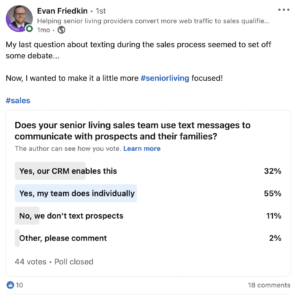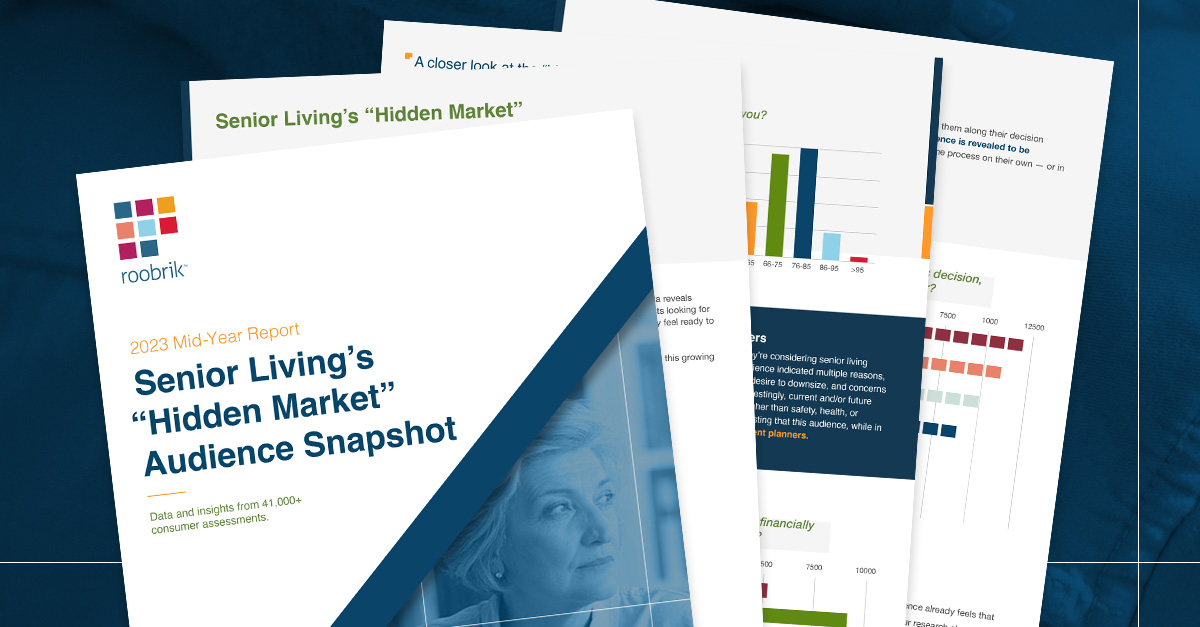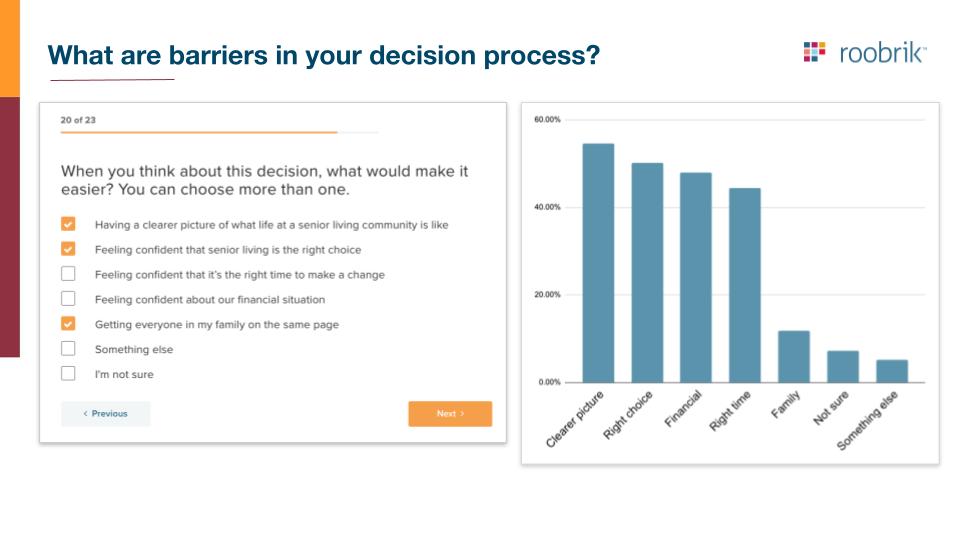Market Insight: How does texting impact the senior living sales process?
On a personal level, texting has become a routine part of our lives. In recent years it’s also been incorporated into online retail, healthcare, fundraising, and more. But what about one-on-one sales situations, which often blur personal and professional boundaries? We know many senior living sales teams use text messaging, both formally and informally, however, we wanted to better understand this trend and how it might steer future features for the Roobrik Insight Solutions™ platform.
The Experts Weigh In
As part of our evaluation, we went straight to the experts — senior living sales and marketing professionals. Evan Friedkin, Head of Business Development at Roobrik, posed this question on LinkedIn: “Does your senior living sales team use text messages to communicate with prospects and their families?” Nearly two dozen providers voted and commented. (See the full post here).
 The result? Providers overwhelmingly rely on text messaging to communicate with prospective residents and family members during the sales process — 87% of those that chimed in.
The result? Providers overwhelmingly rely on text messaging to communicate with prospective residents and family members during the sales process — 87% of those that chimed in.
“It’s definitely part of the sales process as they interact with our sales team,” said Mike Thompson, Director of Digital Marketing at Brightview Senior Living.
But it’s also clear that providers are proceeding carefully in how they use this capability, from both a standards and technology perspective.
As Kate Sammler, VP of Sales and Marketing at Vantage Point Retirement Living admitted, “it took me a hot minute, but I’m a believer in the effectiveness of it for sure. Our CRM software enables us to incorporate text message templates into the CRD process much like we create email templates for follow-up.”
Colleen Pitrone, Director of Sales at Randall Residence, admitted that she was a texting-in-senior-living-sales skeptic at first, but “as lives have become fuller and adult children are sandwiched, it seems like texting is often a direct and clear way to communicate. How times have changed!”
Data Confirmation
Kare’s General Manager and Regional Vice President, Evan Kuo contributed some data to the discussion. “Texts have around a 45% response rate in the sales process. Emails are around 8%.” When we followed up with Evan he pointed us to an article on SellingPower.com titled, The Six Reasons Texting Has a Higher Response Rate for Sales Teams. While we encourage you to read the full article, here are the six reasons they explore plus a few key data points:
- People are already texting. In fact, 81% of Americans text regularly.
- It’s less effort for your sales prospects, with studies showing that 90% of leads prefer texts over phone calls.
- You can create a specific call to action. Links in texts have a clickthrough rate that’s eight times higher than other marketing channels.
- Texting allows you to build personal relationships quickly. Confirm a tour, send a quick thank you — the possibilities are endless!
- Texting is scalable for your sales team. And did you know that texts have a 98% open rate?
- Managers can access texts for real-time feedback — especially if you use a texting platform or it’s tracked by your CRM.
- Roobrik and Texting
With this LinkedIn survey we were able to capture additional data to support the addition of a texting opt-in feature to our product roadmap, and we also learned valuable information that benefits the entire industry. Stay tuned to hear when our update is released, or reach out to us directly if you have questions.
Until then, here’s a last piece for advice from Kate Sammler based on their texting efforts. She shared that they use texting in multiple ways including, “tour confirmations, thank you notes, check-ins, invigorating cold leads, etc. It’s become a wonderful tool and one I can see us adding as part of team KPIs in the not so distant future.
“What was once perceived as a nuisance is becoming preferred by many,” she concludes.





